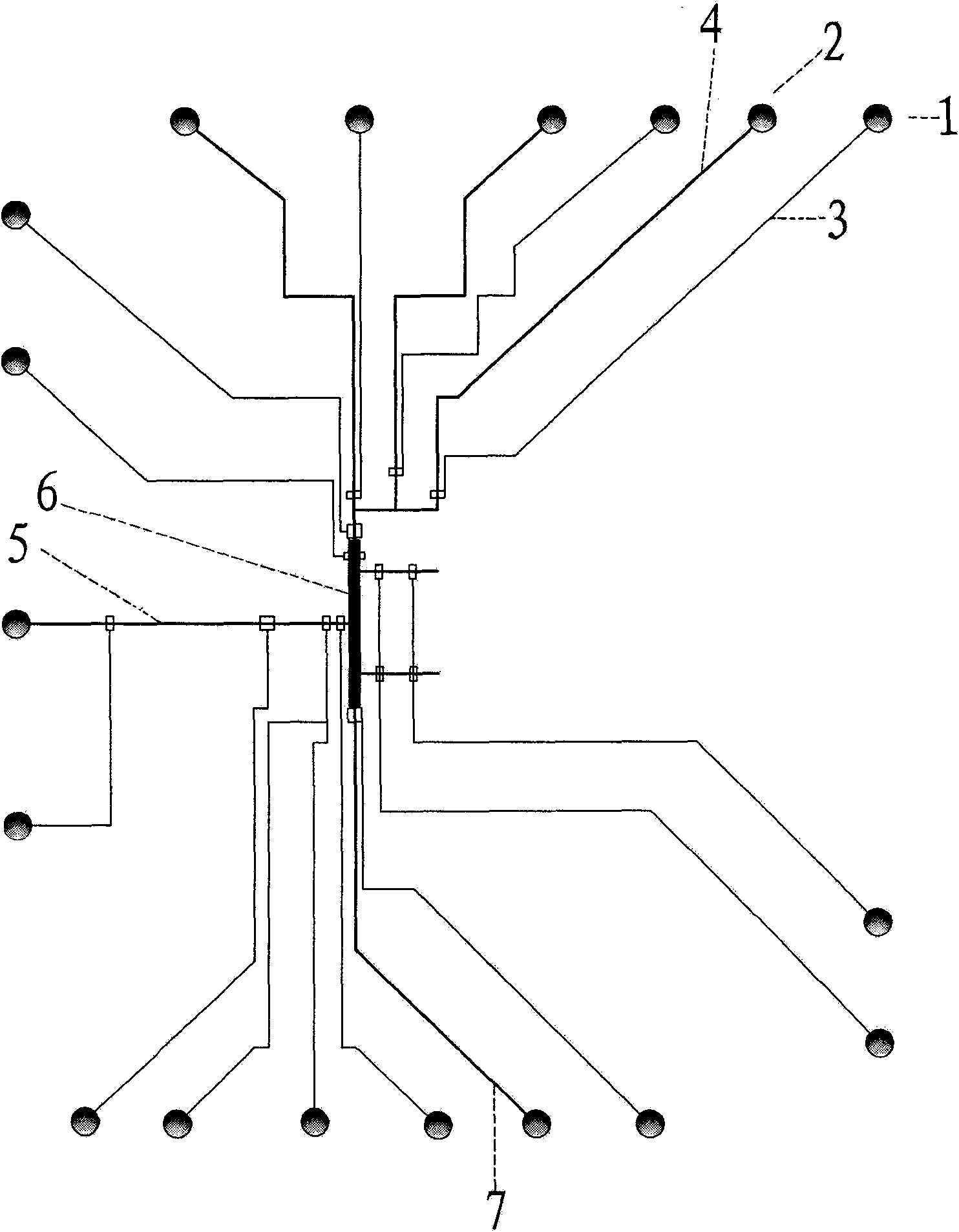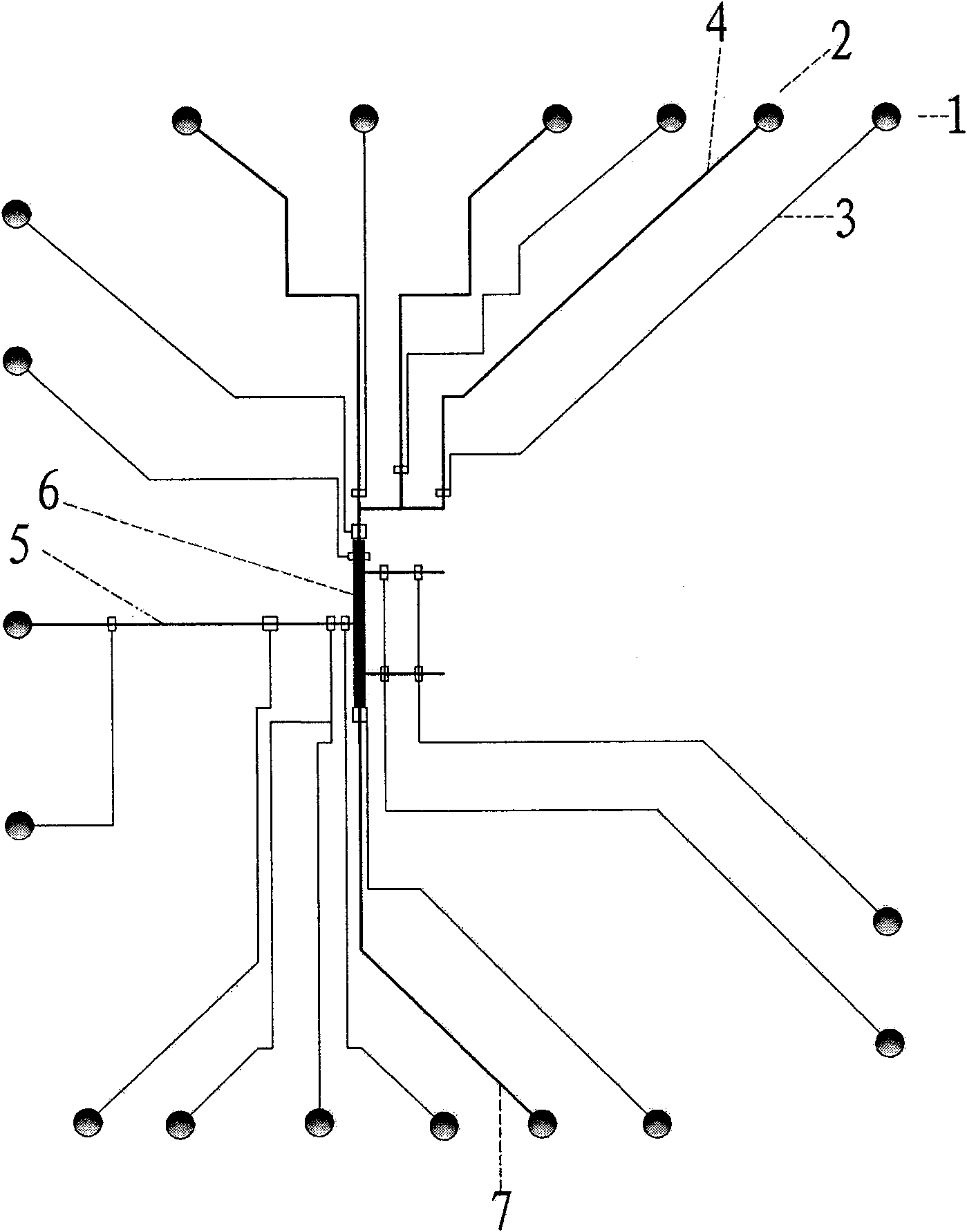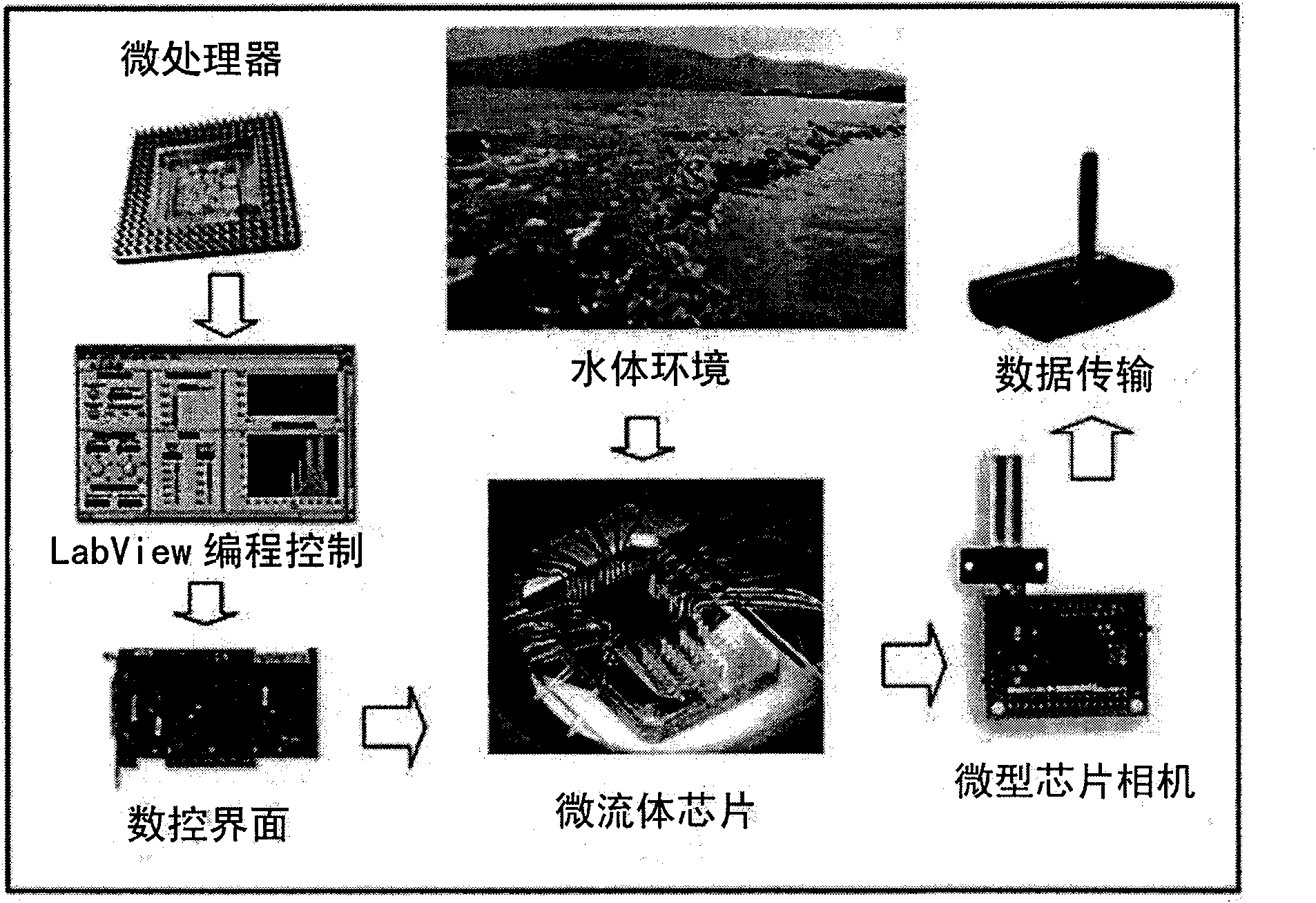Microfludic chip for rapid detection of microcystins and preparation method thereof
A technology of microcystin and microfluidic chip, which is applied in the direction of measuring devices, instruments, scientific instruments, etc., can solve the problems of large volume and not suitable for the environment of freshwater lakes
- Summary
- Abstract
- Description
- Claims
- Application Information
AI Technical Summary
Problems solved by technology
Method used
Image
Examples
Embodiment Construction
[0038] Substrate preparation. Put the silicon chip into Piranha solution (98% concentrated sulfuric acid: 30% hydrogen peroxide = 7: 3) and boil for 15 min. Rinse five times with deionized water, blow dry with nitrogen, and bake at 200 °C for 30 min.
[0039] Spray paint. Pour Microchem's SU-8 glue (the same below) on the center of the silicon wafer, hold the edge of the silicon wafer with your hand to tilt it and rotate it slowly, so that SU-8 covers most of the silicon wafer. Use a spin coater (Spin-Coater KW-4A, Chemat Technology, Inc.) to spin coat at 3000 rpm for 60s to make the glue more evenly distributed, and let it stand for 10min to alleviate the edge protrusion effect.
[0040] Soft bake. The purpose of soft baking is to volatilize the solvent in the SU-8 photoresist, and the key to process control is to volatilize the solvent at a controllable rate. Keep at 65°C, 95°C and 65°C for 3min, 6min and 3min, respectively. Then slowly lower to room temperature at a ra...
PUM
 Login to View More
Login to View More Abstract
Description
Claims
Application Information
 Login to View More
Login to View More - R&D
- Intellectual Property
- Life Sciences
- Materials
- Tech Scout
- Unparalleled Data Quality
- Higher Quality Content
- 60% Fewer Hallucinations
Browse by: Latest US Patents, China's latest patents, Technical Efficacy Thesaurus, Application Domain, Technology Topic, Popular Technical Reports.
© 2025 PatSnap. All rights reserved.Legal|Privacy policy|Modern Slavery Act Transparency Statement|Sitemap|About US| Contact US: help@patsnap.com



